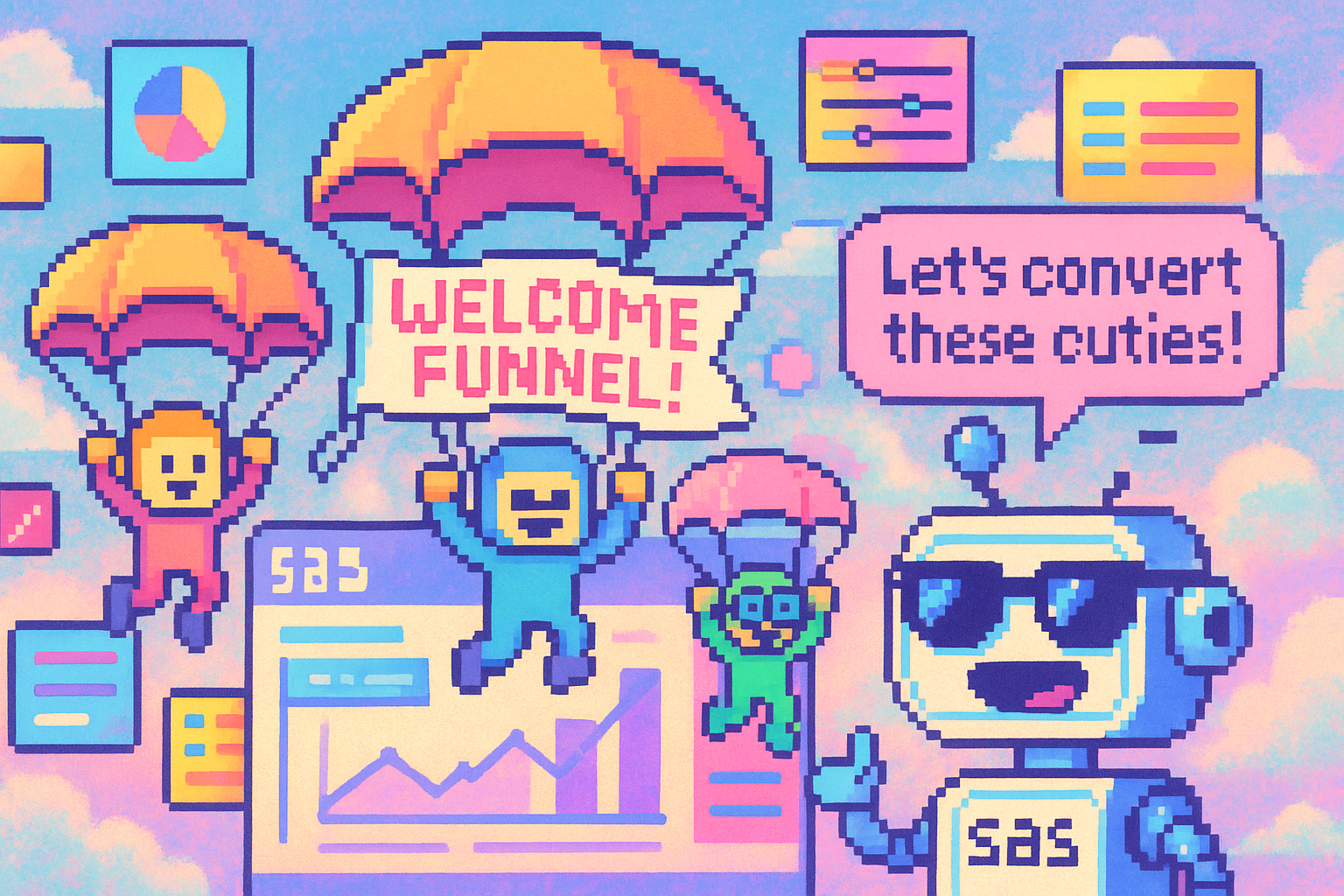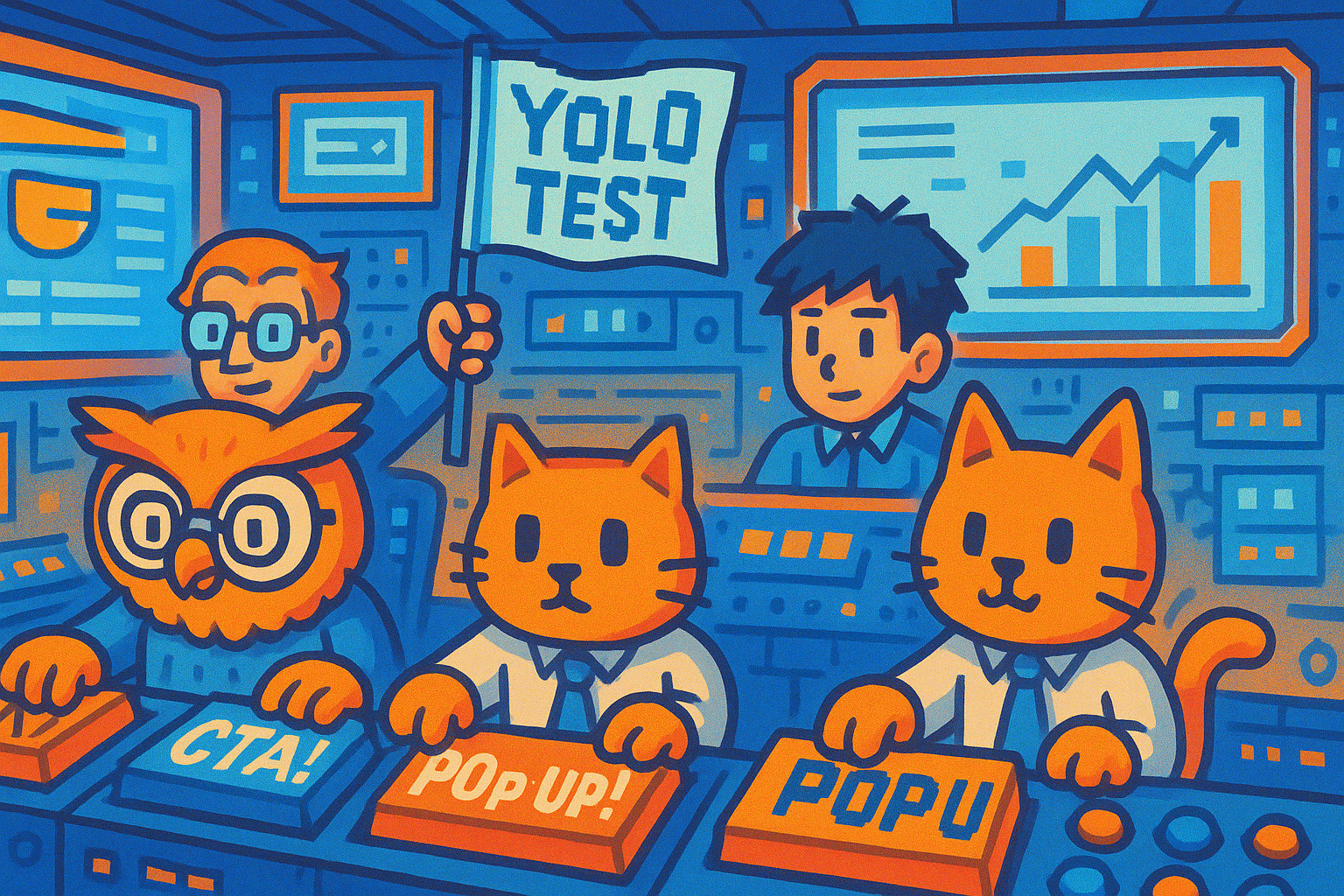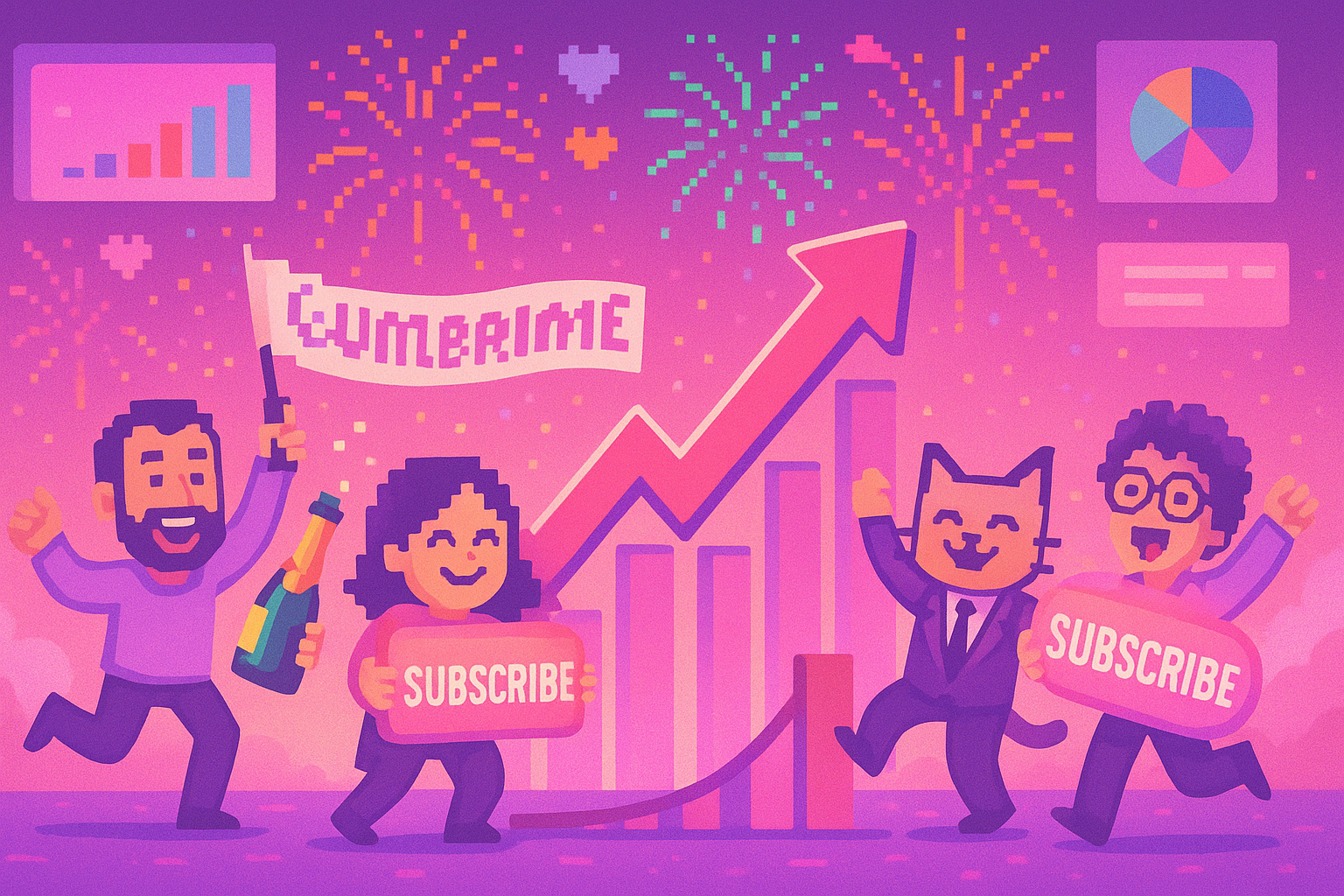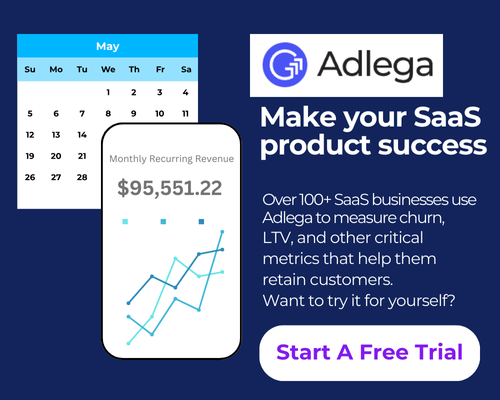
Picture this: You’re watching your analytics dashboard as 1,000 qualified visitors explore your SaaS product, yet only 11 convert to paid customers. This isn’t just disappointing—it’s costing you millions. Recent industry analysis reveals that 67% of SaaS companies underperform conversion benchmarks, leaving massive revenue opportunities on the table while their competitors capture market share.
SaaS conversion rate optimization involves systematically improving the percentage of visitors who complete desired actions across your customer journey. Focus on mobile optimization, personalized onboarding, transparent pricing, and behavioral triggers to achieve 3-5x higher conversion rates than industry averages.
What is SaaS Conversion Rate Optimization?
SaaS conversion rate optimization (CRO) is the systematic process of increasing the percentage of visitors who take desired actions throughout your customer journey. Unlike traditional e-commerce, where conversion might mean a single purchase, SaaS CRO encompasses multiple conversion points—from initial signup to trial activation, paid subscription, and eventual expansion revenue.
What makes CRO particularly powerful for SaaS businesses is the multiplicative effect on recurring revenue models. When you improve customer acquisition by 20% and sales conversions by 10%, you don’t see a 30% lift—you actually see a 32% lift. This compounding effect means that even small improvements in conversion rates can dramatically impact your bottom line over time.
The recurring nature of SaaS revenue means that every conversion improvement doesn’t just affect this month’s numbers—it influences the lifetime value of every customer you acquire. Therefore, investing in conversion optimization isn’t just about marketing efficiency; it’s about building a sustainable growth engine that becomes more powerful with each iteration.
Author POV: In my experience working with SaaS founders, the biggest challenge isn’t technical implementation—it’s understanding that conversion optimization is a marathon, not a sprint. The most successful founders I’ve worked with treat CRO as a core business discipline, not a marketing afterthought.
2025 SaaS Conversion Rate Benchmarks: Where You Stand
Understanding current benchmarks is crucial for setting realistic goals and measuring progress. The top 10% of SaaS websites convert at 15-25% (5x the average), while most companies struggle with significantly lower rates. Here’s where your conversion rates should be in 2025:
Website Visitor to Trial/Demo Conversion:
- No credit card required: 8-10%
- Credit card required: 2-3%
- Demo request (B2B): 3-5%
Free Trial to Paid Conversion:
- B2B SaaS: 15-25% (industry average)
- B2C SaaS: 57% (higher due to simpler products)
- Enterprise SaaS: 10-15% (longer sales cycles)
Freemium to Paid Conversion:
- Consumer freemium: 0.5-5%
- Business freemium: 3-10%
- Team-based products: 5-15%
However, these benchmarks vary significantly by industry vertical. B2B industrial SaaS companies that invest in SEO and SEM have unusually high conversion rates at the top of their funnel because of the sparseness of competition online. Meanwhile, crowded markets like design SaaS see much lower conversion rates across the board.
For context, Slack achieved a remarkable 30% trial conversion rate—far above industry averages—through exceptional onboarding and immediate value delivery. This demonstrates that with the right optimization strategy, dramatically exceeding benchmarks is entirely possible.
To get a comprehensive view of your SaaS performance, explore our guide on essential SaaS metrics that every founder should track.
The Complete SaaS Conversion Funnel: 5 Critical Stages
SaaS conversion optimization requires a systematic approach across five distinct stages. Each stage has unique challenges and optimization opportunities that compound to create your overall conversion performance.
Stage 1 – Website Visitors to Trial/Demo
This initial conversion point is where most SaaS companies lose the majority of their potential customers. Mobile conversion rates lag desktop by 40-60% across all SaaS categories, making mobile optimization critical for success.
Key optimization tactics for this stage include:
- Mobile-first design: With 62.54% of SaaS traffic coming from mobile devices, your mobile experience must be flawless
- Clear value proposition: Visitors should understand your product’s benefit within 5 seconds
- Friction reduction: Minimize form fields and eliminate unnecessary steps
- Social proof placement: Display customer logos and testimonials prominently
The key is balancing conversion optimization with lead quality. While removing credit card requirements can increase signup rates by 5x, it may also reduce trial-to-paid conversion rates. Test both approaches to find your optimal balance.
For detailed strategies on improving this crucial metric, check out our comprehensive guide on free trial conversion rates.
Stage 2 – Trial Users to Activated Users
Getting users to sign up is only half the battle—activation is where the real conversion magic happens. The average month-1 retention rate in B2B SaaS is 46.9%, highlighting the importance of effective onboarding.
Successful activation strategies include:
- Progressive onboarding: Break complex setups into digestible steps
- Personalized experiences: Segment users based on their role and use case
- Time-to-value optimization: Get users to their “aha moment” as quickly as possible
- Interactive tutorials: Show don’t tell—guide users through key features
Notion exemplifies this approach with their welcome survey during onboarding. They present three options to gather data about users’ intended use cases, then personalize the journey to display relevant content that resonates with each user’s specific needs.
Learn more about creating exceptional user experiences in our detailed guide on customer onboarding.
Stage 3 – Activated Users to Paying Customers
This is where your trial experience directly translates to revenue. With an opt-in trial, industry benchmarks show an 18.20% organic free trial to conversion rate, but top performers achieve much higher rates through strategic optimization.
Advanced conversion tactics include:
- Reverse trials: Give users temporary access to premium features, then create urgency around conversion
- Behavioral triggers: Send upgrade prompts based on usage patterns, not just time
- Value demonstration: Show users exactly what they’re getting for their money
- Soft limits: Implement gentle restrictions that encourage upgrades without frustrating users
The most effective approach combines product-led growth principles with strategic sales touchpoints. Users should feel naturally drawn to upgrade because they’ve experienced genuine value, not because they’re being pressured.
For comprehensive strategies on this approach, explore our guide on product-led growth.
Stage 4 – Customer Retention and Expansion
Conversion optimization doesn’t end with the initial sale—expansion revenue often represents the highest-margin growth opportunity. The median net retention rate for SaaS companies is 102%, meaning the best companies actually grow revenue from existing customers.
Expansion optimization focuses on:
- Usage-based triggers: Identify when customers are ready for more seats or features
- Value-first upselling: Position upgrades as solutions to specific problems
- Granular analytics: Track feature adoption to identify expansion opportunities
- Proactive success management: Prevent churn before it happens
The key is creating a natural progression where customers want to expand because they’re getting more value, not because they’re hitting arbitrary limits.
Learn more about maximizing expansion revenue in our detailed guide on net revenue retention and account expansion strategies.
Stage 5 – Advocacy and Referrals
Happy customers become your best conversion channel. Word-of-mouth and referrals often convert at 3-5x higher rates than other channels because they come pre-qualified with trust.
Building systematic advocacy involves:
- Exceptional experiences: Exceed expectations at every touchpoint
- Referral programs: Incentivize sharing with both referrer and referee benefits
- User-generated content: Make it easy for customers to share their success
- Community building: Create spaces for customers to connect and share
The most successful SaaS companies turn their customers into active evangelists who drive organic growth through authentic recommendations.
Discover how to create these exceptional experiences in our guide on customer experience optimization.

Advanced Psychological Triggers That Drive SaaS Conversions
Understanding the psychology behind conversion decisions gives you a significant advantage. Modern SaaS buyers are sophisticated, but they’re still human—and humans make decisions based on predictable psychological patterns.
Social Proof and Authority
Social proof remains one of the most powerful conversion drivers, but it must be implemented strategically. Generic testimonials don’t move the needle—specific, relevant social proof does.
Effective social proof strategies include:
- Customer logos: Display recognizable brands that your prospects aspire to emulate
- Usage statistics: Show real numbers (“Used by 10,000+ teams”) rather than vague claims
- Case studies: Specific results from customers in similar situations
- Real-time activity: Show live usage or recent signups to create momentum
Canva masterfully uses social proof at scale, displaying user creation statistics and showcasing work from their community. This approach works because it demonstrates both popularity and quality simultaneously.
The key is matching social proof to your audience’s specific concerns and aspirations. Enterprise buyers care about security and reliability, while startups focus on growth and efficiency.
Scarcity and Urgency
Scarcity drives action, but it must be authentic to be effective. Fake countdown timers and artificial limitations destroy trust and hurt long-term conversion rates.
Ethical scarcity tactics include:
- Limited-time pricing: Legitimate promotional periods for annual subscriptions
- Capacity constraints: Honest limitations on onboarding or support capacity
- Feature releases: Early access to new capabilities for existing customers
- Seasonal promotions: Genuine business reasons for temporary offers
Author POV: I’ve seen too many SaaS companies damage their brand with fake scarcity tactics. The most successful approach is building genuine urgency around business value—showing customers what they’re losing by waiting, not what they’re missing by not buying.
Cognitive Load Reduction
Decision fatigue is real, and it kills conversions. The more choices you present, the harder it becomes for prospects to make any decision at all.
Cognitive load reduction strategies include:
- Simplified pricing: Limit options to 3-4 clear tiers maximum
- Progressive disclosure: Show information when it’s needed, not all at once
- Clear recommendations: Highlight your “most popular” or “recommended” option
- Smart defaults: Pre-select the option that works for most customers
The goal is making the path to purchase as frictionless as possible while still providing enough information for confident decision-making.
For more insights on pricing optimization, explore our comprehensive guide on SaaS pricing models.
2025 Mobile-First Conversion Optimization
Mobile optimization is no longer optional—it’s essential for survival. Mobile traffic accounts for 62.54% of global website visits, and mobile conversion rates lag desktop by 40-60% across all SaaS categories. This gap represents a massive opportunity for companies willing to invest in mobile-first experiences.
Critical mobile optimization strategies include:
- Progressive Web App features: Offline functionality and push notifications reduce abandonment
- Touch-optimized interfaces: Larger buttons and simplified navigation for mobile users
- Accelerated loading: Mobile users expect sub-3-second load times
- Simplified forms: Use progressive forms and smart defaults for mobile completion
Companies implementing progressive web app features see 60% increases in user engagement, with offline functionality and push notifications significantly reducing trial abandonment rates.
The key is designing for mobile first, then enhancing for desktop—not the reverse. Your mobile experience should be your primary experience, with desktop as the enhancement.
Beyond just responsive design, consider how mobile users interact with your product differently. They’re often multitasking, have shorter attention spans, and expect immediate value. Design your mobile onboarding and trial experience accordingly.

Pricing Page Conversion Mastery
Your pricing page is often the final conversion hurdle—and it’s where many SaaS companies lose otherwise qualified prospects. Pricing pages can be key points in lead conversion and make meaningful impacts on SaaS conversion rates.
Proven pricing page optimization strategies include:
- Transparent pricing: Avoid hidden fees and clearly communicate total costs
- Limited options: Offer 3-4 pricing tiers maximum to prevent decision paralysis
- Annual promotion: Make annual subscriptions the default with clear savings
- Feature differentiation: Clearly show what changes between tiers
- Value-based CTAs: Use action-oriented language that emphasizes benefit
The most effective pricing pages tell a story of progression—basic users start with the entry tier, growing companies move to the middle tier, and enterprises need the full feature set. This narrative helps prospects self-select the right option.
Consider implementing interactive pricing calculators that let prospects adjust usage parameters. This approach reduces friction while helping customers understand how pricing scales with their needs.
For comprehensive pricing strategy insights, explore our detailed guide on SaaS pricing models.
A/B Testing and Data-Driven Optimization
Successful conversion optimization requires systematic testing and measurement. Gut instincts and best practices provide starting points, but data-driven decisions create sustainable improvements.
Building an effective testing program involves:
- Baseline establishment: Measure current performance before making changes
- Hypothesis formation: Test specific theories about user behavior
- Statistical significance: Ensure tests run long enough for reliable results
- Segmented analysis: Different user segments may respond differently to changes
Common testing mistakes include stopping tests too early, testing too many variables simultaneously, and ignoring statistical significance. The most successful SaaS companies optimize for quality and alignment across the entire funnel, not just top-of-funnel conversion metrics.
Focus on testing elements that have the highest potential impact: headlines, value propositions, pricing presentation, and call-to-action placement. Small changes to these elements can produce significant results.
Author POV: The biggest A/B testing mistake I see is companies testing cosmetic changes while ignoring fundamental user experience issues. Fix the big problems first, then optimize the details.
For comprehensive measurement strategies, explore our guide on key performance indicators for SaaS businesses.
Common SaaS Conversion Killers (And How to Fix Them)
Even well-intentioned SaaS companies often sabotage their conversion rates through common mistakes. Identifying and fixing these issues can provide immediate improvement.
The most destructive conversion killers include:
- Slow loading times: Pages must load in under 3 seconds or users abandon
- Complex signup processes: Every additional field reduces conversion rates
- Unclear value propositions: Prospects should understand benefits immediately
- Poor mobile experiences: Mobile users have different needs and expectations
- Overwhelming feature lists: Focus on benefits, not features
- Lack of social proof: Build trust through customer testimonials and case studies
The solution is systematic user experience auditing. Walk through your signup process as a completely new user would—better yet, watch real users navigate your site and identify friction points.
Page speed optimization should be your first priority. Use tools like Google PageSpeed Insights to identify technical issues, compress images, and minimize JavaScript. Even small improvements in loading time can significantly impact conversion rates.
For comprehensive user experience guidance, explore our detailed guide on user experience in SaaS.
Industry-Specific Conversion Strategies
Different industries require different conversion approaches. What works for a consumer productivity app won’t necessarily work for enterprise security software.
Enterprise SaaS Considerations:
- Longer sales cycles require nurturing campaigns
- Multiple stakeholders need different value propositions
- Security and compliance concerns must be addressed upfront
- ROI calculations should be prominent and specific
SMB-Focused Optimization:
- Quick time-to-value is essential
- Simple pricing structures work better than complex options
- Self-service onboarding reduces friction
- Cost-effectiveness messaging resonates strongly
Vertical SaaS Strategies:
- Industry-specific language and examples
- Compliance and regulatory considerations
- Integration capabilities with existing tools
- Specialized workflow optimizations
The key is understanding your specific audience’s priorities and constraints. Industries that require complex solutions like enterprise software or cybersecurity often have longer sales cycles and lower conversion rates, while simpler SaaS products may experience higher conversion rates due to easier adoption.
For more insights on targeting different business segments, explore our guides on B2B business models and SMB market strategies.
Building Your SaaS Conversion Optimization Strategy
Creating a systematic conversion optimization strategy requires careful planning and resource allocation. The most successful SaaS companies treat CRO as a core business discipline, not an ad-hoc marketing activity.
Your strategic framework should include:
- Current state assessment: Audit your existing conversion funnel performance
- Opportunity prioritization: Focus on changes with the highest potential impact
- Resource allocation: Dedicated team members and budget for optimization
- Testing roadmap: Systematic approach to hypothesis testing and validation
- Success metrics: Clear KPIs for measuring improvement
Start with a comprehensive funnel analysis. Where are you losing the most prospects? Which stages have the biggest drop-off rates? Focus your initial efforts on the areas with the greatest improvement potential.
The most converting companies save at least 5% of their budget for conversion rate optimization purposes. This investment in systematic optimization pays dividends through improved customer acquisition efficiency and increased lifetime value.
Author POV: The biggest mistake I see SaaS founders make is treating conversion optimization as a one-time project instead of an ongoing discipline. The most successful companies I’ve worked with have dedicated CRO resources and systematic testing programs.
For comprehensive guidance on building these foundational systems, explore our guide on business operations fundamentals.
The Future of SaaS Conversion Optimization
Conversion optimization continues evolving with new technologies and changing user expectations. The most successful SaaS companies focus on customer value delivery over feature proliferation, using conversion optimization insights to guide product development decisions.
Emerging trends shaping the future include:
- AI-powered personalization: Dynamic content and pricing based on user behavior
- Voice and conversational interfaces: Natural language interactions reducing friction
- Predictive analytics: Proactive intervention to prevent churn and encourage upgrades
- Micro-interactions: Subtle animations and feedback improving user experience
The key is staying focused on fundamental user needs while experimenting with new technologies. The most successful optimization strategies combine timeless psychological principles with cutting-edge implementation.
WCAG 2.2 Level AA compliance is mandatory for EU markets by June 2025, making accessibility optimization both a legal requirement and a conversion opportunity.
For insights on implementing these advanced strategies, explore our guide on growth hacking strategies.
Key Takeaways for SaaS Conversion Success
Optimizing SaaS conversion rates requires systematic thinking, continuous testing, and deep understanding of your specific audience. The most successful companies achieve 3-5x higher conversion rates than industry averages through disciplined optimization.
Essential strategies for conversion success include:
- Mobile-first design and optimization for 62.54% of traffic
- Systematic funnel analysis and bottleneck identification
- Psychological triggers aligned with user motivations
- Data-driven testing and continuous improvement
- Industry-specific optimization strategies
- Strategic resource allocation for ongoing optimization
Remember that conversion optimization is a marathon, not a sprint. Small conversion gains can make a significant difference when compounded over time. Focus on sustainable improvements rather than quick fixes.
The opportunity for dramatic conversion improvement remains substantial across the SaaS industry. Companies willing to invest in systematic optimization gain sustainable competitive advantages that compound over time.
For comprehensive guidance on building a successful SaaS business, explore our foundational guide on SaaS business models.
Ready to transform your SaaS conversion rates? Start your free Adlega forecast now and discover your optimization opportunities.

Leave a Reply